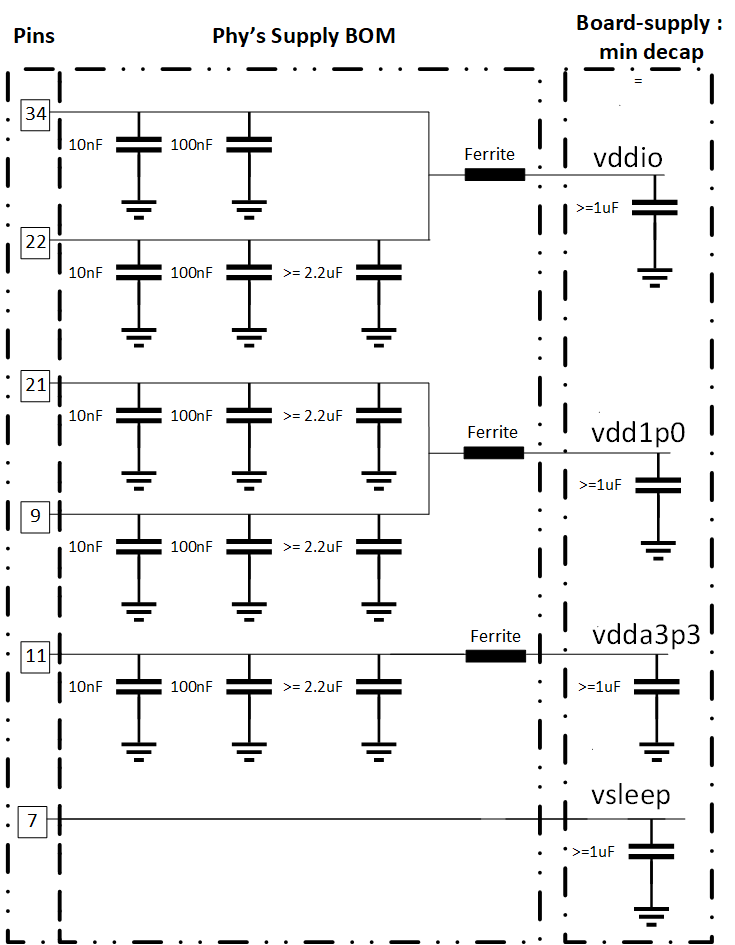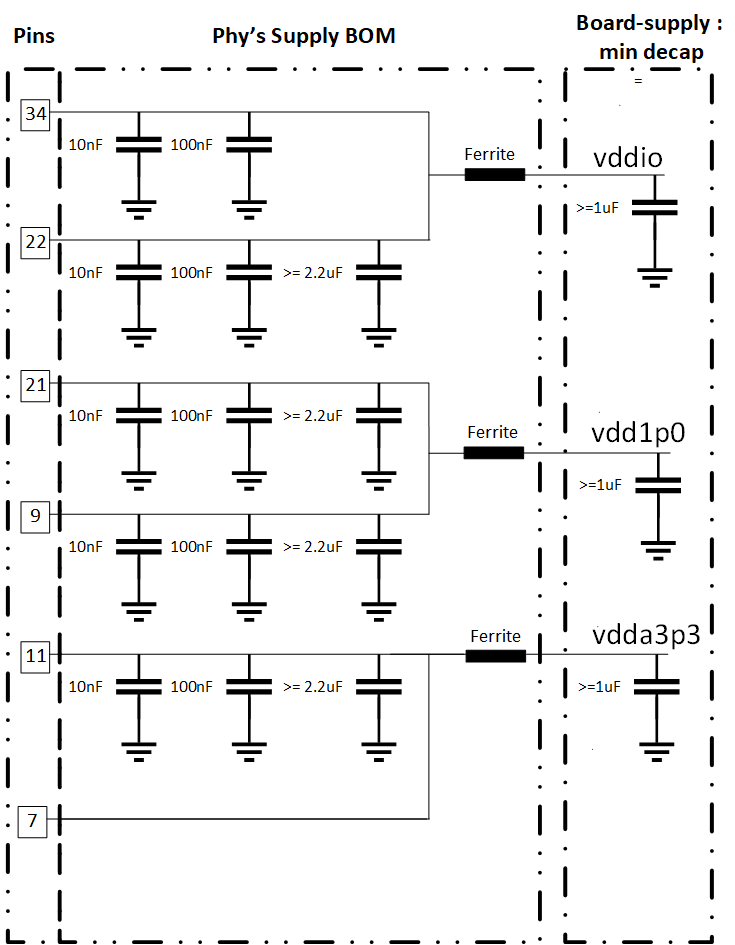SNLS603D December 2020 – April 2025 DP83TG720R-Q1
PRODUCTION DATA
- 1
- 1 Features
- 2 Applications
- 3 Description
- 4 Device Comparison Table
- 5 Pin Configuration and Functions
- 6 Specifications
-
7 Detailed Description
- 7.1 Overview
- 7.2 Functional Block Diagram
- 7.3 Feature Description
- 7.4 Device Functional Modes
- 7.5 Programming
- 7.6 Register Maps
- 8 Application and Implementation
- 9 Device and Documentation Support
- 10Revision History
- 11Mechanical, Packaging, and Orderable Information
Package Options
Mechanical Data (Package|Pins)
- RHA|36
Thermal pad, mechanical data (Package|Pins)
- RHA|36
Orderable Information
8.3 Power Supply Recommendations
The DP83TG720R-Q1 is capable of operating with a wide range of IO supply voltages (3.3V, 2.5V, or 1.8V). No power supply sequencing is required. The recommended power supply de-coupling network is shown in following figure :
 Figure 8-2 Recommended Supply
De-Coupling Network (if sleep mode is used in the application)
Figure 8-2 Recommended Supply
De-Coupling Network (if sleep mode is used in the application) Figure 8-3 Recommended Supply
De-Coupling Network (if sleep mode is not used in application)
Figure 8-3 Recommended Supply
De-Coupling Network (if sleep mode is not used in application)Table 8-3 Recommended Components for
Power Network
| Design Parameter | Value |
|---|---|
| VDDIO | 1.8V, 2.5V, or 3.3V |
| De-Coupling Capacitors VDDIO (pin 34) | 10nF, 100nF |
| De-Coupling Capacitors VDDIO (pin 22) | 10nF, 100nF, 2.2uF |
| Combined Ferrite Bead for VDDIO | BLM18HE102SN1 |
| VDDA | 3.3V |
| De-Coupling Capacitors VDDA (pin 11) | 10nF, 100nF, 2.2uF |
| Ferrite Bead for VDDA | BLM18KG601SH1 |
| VDD1p0 | 1V |
| De-Coupling Capacitors VDD1P0 (pin 9) | 10nF, 100nF, 2.2uF |
| De-Coupling Capacitors VDDA (pin 21) | 10nF, 100nF, 2.2uF |
| Combined Ferrite Bead for VDD1P0 | BLM18KG601SH1 |
| Vsleep | 3.3V |
Note: For recommendation on LDOs
for VDD1p0 and Vsleep, please refer to the DP83TC811, DP83TG730 Rollover Document application
report.